
NEW URL LINKMy provider XS4ALL has been taken over by KPN. All my files will be deleted as per 17th December 2022. My apologies to all regular visitors over the past 15 years. However I have started a domain: michaelrogge.com. This article will reappear under the link: https://michaelrogge.com/Homepage/newageb.html |
 |
The philosophers of the 18th century were disenchanted with the state of civilization they saw around them. Praise of another culture became popular. China was one of them. Chinoisery appeared on furniture and porcelain. Operas and plays had Chinese themes. Some even considered the wisdom of Confucius superior to the tenets of Christianity.
The fascination with the Orient reached its peak during Romanticism (1790-1815).
Western scholars had begun to study Sanskrit in the 17th century. But it was not until the 19th century that translations of Indian scriptures
became available in the West.
French scholars took the lead. Along with Sanskrit (1785) other languages were deciphered: Pahlavi in 1793, cuneiforms in 1803, hieroglyphs in 1822, and Avestan in 1832. The path was now paved to the treasures of Eastern thought. Authentic texts of Buddhism were discovered by Hodgson in 1821 while living in Nepal. He obtained 400 Sanskrit and Tibetan volumes. A Pali grammar was published in 1826 by Burnouf and Lassen.
A young Hungarian, Csoma de Koros, went so far as to enter monastic life in Tibet in 1850. Prinsep deciphered inscriptions of the Indian king Ashoka between 1834 and 1837.The study of Islam and the Far East was well on its way. Authorities in Semitic, Indic and Chinese published its literature. Translations of pre-Islamic writers, Persian poets and mystics, along with Chinese poetry were printed one after the other.
For the first time Oriental religious philosophy became generally accessible. It led to a veritable Oriental Renaissance. The philosophy and way of thought contained in the Eastern scriptures astounded the Western cultural elite towards the middle of the 19th century and influenced such philosophers and writers as Schopenhauer, Goethe, Heine, Nietzsche, Shelley, Emerson, Baudelaire and de Balzac.
A greater respect grew for Eastern religions now that their great works appeared in print. In 1785 Wilkins published the Bhagavad Gita. Translations of the Rig Veda, Mahabharata, Upanishads, Vishnu Purana and Lotus sutra followed, along with an "Introduction Ó
l'Histoire du Buddhisme Indien" by Burnouf.
The spiritual approach of the re-discovered religions was felt
as a relief from the prevalent Christian dogmatism.
The idea emerged of the unity behind all religions.
Some of these ideas found their way in the Christian Science and New Thought movements.
Andrew Jackson Davis (1826-1910, later known as "the Poughkeepsie seer") became one of the founders of modern Spiritualism in the United States. Like the later Edgar Cayce he could give an accurate diagnosis of a patient's disease whilst under induced "magnetic sleep'. A believer in mesmerism he developed a spiritualistic philosophy of his own.
Meanwhile Spiritualism got a fresh impulse. When in 1848 Karl Marx began his "Kommunistisch Manifest" with : "A ghost wanders through Europe", spooks made a stir in Hydesville (N.Y., U.S.A.). Daughters of the Fox family managed to communicate with the spirit of a dead man by means of raps. The press saw to it that these events became nationwide news.
Spiritualism came in the wake of the inventions of the telegraph and telephone that made it possible to send messages over long distances. It was presumed that communication with the dead - nowadays called channeling - might be discovered soon. The sensational reports of the Fox family communicating with the dead made holding seances at home a popular pastime.
 |
Even president Lincoln (photo) had contact with mediums and took part in seances. At the European courts the situation was no less different. The spiritualistic movement was under way, claiming millions of believers.
It was Madame H.P.Blavatsky (HPB for insiders) who combined the European esoteric tradition, Spiritualism and the Oriental Renaissance into one coherent system. She provided it with a secret doctrine, a martyr (herself), a mysterious origin and finally, but not in the least, she gave it the form of a (semi-religious) fraternity. She claimed to have received from Masters of Wisdom a key to the mysteries long kept secret from mankind. This White Brotherhood - these pioneers of mankind - were thought to reincarnate at all times to enlighten mankind with their wisdom and knowledge.
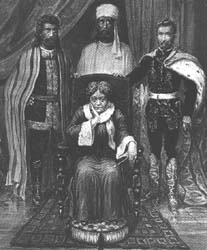 |
Thus she presented a remarkable and revolutionary concept
of life in the universe. At the same time she gave man a new purpose of
living based on Indian religious and philosophical traditions.
In spite of ridicule these ideas and approach made a deep impression on late
nineteenth century's
society and is still the foundation of the New Age movement.
Yet, without her being aware of it, HPB's philosophy was imbued with the spirit of the age. In her system the intellect could unriddle the mysteries of the universe. Her motto "There is no religion higher than truth" was aimed more at intellectual exploration, than intuitive insights gathered through meditation and contemplation as was the case with mystical theosophy (without capital!) of former ages.
Mme Blavatsky gave mankind a grand vision of the universe as opposed to the corset of the narrow-minded dogmatic outlook of Christianity at the time. It was generally believed then that creation took place some six thousand years ago. She countered by postulating that it was billions of years ago and that mankind lived for millions of years on Earth. She introduced also the concept of a holistic universe. The popularity of present-day ideas of reincarnation and karma - now household words - can be traced back to her.
In all fairness it should be said that in later years Theosophy stressed the importance of development of intuitive insight through the practice of Eastern disciplines such as Raja yoga and meditation. Theosophy also pointed out to the indigenous population of India and Indonesia the value of their forgotten ancient traditions and so raised their respect for their own culture. Gandhi, Nehru and Sukarno were members once.
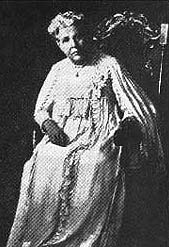 |
At the time that mme Blavatsky was hounded by scandalous rumours she found a worthy successor in Annie Besant in 1889. A woman of extraordinary talents and a great orator. Historian Arthur Nethercott writes: "During her eighty-five years Annie Besant lived many lives, some of them so incredible that it seems impossible they were lived at all." Besides giving fresh impetous to Theosophy, she was also to give India back its respect for its own culture. She was a powerful force in the campaign for Indian Home Rule before Gandhi and later Nehru took over.
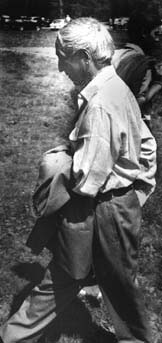 |
She is also known to have taken care of the education of a very special Indian boy Jiddu Krishnamurti . Son of an Indian Theosophist, Jiddu's gift was discovered by Annie Besant's closest colleague C.W.Leadbeater in 1909. To her dismay after reaching maturity he became to advocate quite a different approach to life than Theosophists did. His disbanding in 1929 the Order of the Star in the East, especially founded for him, came as a blow to the Theosophical Movement. It had already been plagued by split-ups. Theosophy became after the thirties a shadow of the former mind-swaying movement. Its role was taken over by others.
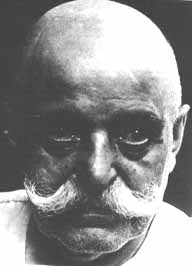 |
One of them was founded by George Ivanovitch Gurdjieff (photo). The life-history of this spiritual teacher is as much shrouded in mystery as that of Mme. Blavatsky. In fact they had many similarities. It is assumed that he was born in Alexandropol (Repl. of Armenia), around the time that the Theosophical Society was formed in 1875, from a Greek father and an Armenian mother. Gurdjieff claimed that as a young man he had travelled extensively. He had even reached Tibet in 1902, much like HPB. Again some believed that he was a Tsarist agent. In his book Meetings with Remarkable Men Gurdjieff describes his quest for Hidden Masters of Wisdom, which took him to Egypt (like HPB) and thence to Central Asia and Northern India.
His later training and teachings were the gist of the instruction he said to have received from various masters in esoteric schools. They are a departure from the Theosophic tradition. Yet, as most teachings do in order to catch on, they breath the changed spirit of the era.
Gurdjieff's instructions were aimed at the harmonious development of the supposed centres in man. It came at a time that Freud's psychology was being discovered.
When Russian ballet, notably that of Diaghilev made a great impact in the West, Gurdjieff introduced his revolutionary form of ballet.
So Gurdjieff's system took advantage of fads and fancies of his lifetime.
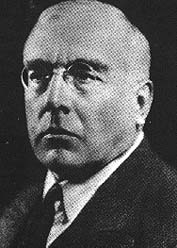 |
A noted Russian author Peter Damien Ouspensky, who had departed from Theosophical thought and had explored the time dimension in his book The Fourth Dimension, met Gurdjieff in 1912 in Moscow. Gurdjieff was to present his ballet
In In Search of the Miraculous Ouspensky gave an account of the unusual training and adventures they went through at the time of the Russian revolution. Finally in 1919 both of them arrived in Europe and settled in France and Great Britain respectively. By that time they had grown apart and initiated their own schools.
Gurdjieff established the Institute for the Harmonius Development of Man in chateau du Prieuré des Basses-Loges, France, in 1922. It became notorious for its harsh treatment of followers. This Gurdjieff considered necessary. He termed it voluntary conscious suffering, essential for his devotees, who were still asleep, to wake up to reality.
More of such training centres would follow by rival Gurdjieff followers. One of them being John G. Bennett who was to introduce Subud to the West in 1957.
As we have seen Oriental religion and the European occult traditions had made a great impact on the intellectual elite of America in the nineteenth century . The second president John Adams(1767-1848) is known for his fascination with Oriental thought. He was a voracious reader of the translations of Eastern religious works.
The leaders who stood at the craddle of the birth of the nation were influenced by Masonic, Spiritualistic and Rosicrucian thought. "A New Order of the Age begins" proclaims the reverse side of the Great Seal of the United States.
 |
Prominent American writers, who became known as the Transcendentalists, were deeply influenced by Eastern thought. Ralph Waldo Emerson(1803-1882) was one of the great admirers of Oriental religious classics, notably the Bhagavad Gita. His secretary, Henry David Thoreau wrote Walden, a source of inspiration for hippies a century later.
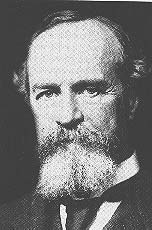 |
One of the foremost American psychologists of the time William James (1842-1910) published in 1902 his pioneering Varieties of Religious Experience, building a bridge between psychology and religion. It has become the cornerstone of scientific study of religion to this day. Prof. James also called for a serious study of paranormal phenomena and played a leading part in the foundation in 1885 of the American Society for Psychical Research.
A noteworthy event was the Parliament of Religions held in Chicago in 1893. It was the first time that a platform of this kind had been organized. Before an audience of four thousand people leaders of the great religions presented their views on life. One of the results was a greater appreciation for Oriental religions, who were well-represented. Swami Vivekenanda expounded inner Hinduism; Soyen Shaku, abbot of a Japanese Rinzai monastry: Zen-Buddhism. Anagarika Dharmapala established after the congress an American branch of the Maha Bodhi Society, the first Buddhist society in the West.
This was merely the beginning of a flow of Eastern teachings and guru's to effect Western thinking.
At the same time the Western esoteric tradition also found a following in new schools, movements and cults. Too numerous to go into here presently.
New Age was primarily a movement amongst the younger generation in the late sixties that demanded to play a greater part in all aspects of society. Through the use of mind-expanding drugs a greater reality was being unfolded to them that called for other explanations than traditional religion could give. Its concepts of God and Love were too narrow to accommodate the overwhelming experiences they had on their trips. Transcendence, self-realisation, yoga, meditation, all part of existing traditions, were being rediscovered and practised.
Originally it had been given the name: the Age of Aquarius to signify the new era of spiritual enfoldment as foretold in astrology.
In the early seventies, when the movement was well on its way, the name New Age was adopted. Of course it was a term with whiskers on. William Blake already wrote in 1804-08, in his foreword to Milton: "Rouze up, O Young Men of the New Age!
As might be expected New Age unleashed counter-forces from the side of fundamentalist Christian denominations. Especially after Marilyn Ferguson wrote in her book The Aquarian Conspiracy that the fraternity dedicated to this philosophy constituted a worldwide network. Dedicated persons would recognize each other in a few minutes without secret signs, but merely by a short exchange of ideas. This was seen as a sort of Satanic conspiracy. Especially people who followed so-called occult practices came under suspicion. The orthodox Christian establishment found allies in the equally dogmatic Sceptics and members of CSICOP in their efforts to suppress and misrepresent New Age, occultism and reports of paranormal phenomena in the media.
But in effect it were the Christians who started misrepresenting the life of Jesus. This is the conclusion of some modern biblical scholars. The oldest document of the Jesus tradition that survived is that of the Thomas gospel, part of the Nag Hammadi papers discovered in Egypt in 1945. In it a gnostic Jesus comes forward that has more affinity with the New Age than the fundamentalism of orthodox Christianity.
Christians consider the Bible the word of God whereas a little research shows that the oldest 4th century codices we have is the product of countless copying errors, inconsistencies, alterations and invention of fairy tale-like stories, often borrowed from pagan sources, to instill awe in the figure of Jesus who supposedly endorsed their dogmatic views but who may have been a heretic himself. For one thing, the gospels were not written by the apostles. The most important event in Jesus life, the crucifixion, may not even have taken place. It is not mentioned in the oldest first century documents. The later Christians instilled fear in followers with their prediction of the end of the world to come in in their lifetime, started bloody persecution of heretics and Jews. Thus they made a mockery of what their supposed founder taught.
In the last few decades the Sceptics seem to have been successful. Although there are regular sightings of UFO's, crop circles and other unexplainable events, they hardly ever reach the press. Yet the paranormal abounds in sci fi movies. Although the electronic voice phenomenon is hardly heard of anymore, another one: the Charlie game, in which pencils move without being touched, captures the minds of kids some time ago. There are explanations for the phenomenon. As to be expected the most incredible come from the Sceptics. The academic Society for Psychical Research with a research history from the nineteenth century onward is hardly heard of anymore.
New Age has not traveled to the end of the road yet. It is reaching a stage of maturity in which wheat is being separated from the corn. Yet, it still comprises a broad spectrum of activities from the commercial rip-off to unselfish dedication to serve mankind spiritually. Many do not wish to be associated with the name because it reminds them of the turbulence associated with the uprising of the younger generation in the late sixties and the lamentable drug excrescences.
One may pray that the movement will sustain its original purity and momentum - raise high the spirit of new generations, giving it an immense vista of life and a purpose to live for.
The New Age vision may contribute to fostering a grand vision to the young generation. Liberated from the stifling corset of narrow religious dogmatism it may present them with a great concept of man in the universe. In its present form it learns that from the big bang onward, billions of years ago, as a miracle the universe has unfolded. The ultimate? wonder being the human species arising by a stupendous sequence of 'co´ncidences'. Science has only explored the physical shell of nature but has no idea what lies behind it. There are many indications that there is far more than meets the eye: consciousness is hardly touched upon, paranormal phenomena studied only by the dedicated few, amongst them men of science, even Nobel prize winners. But little attention is given to it by the media.
New Age can give mankind a grander vision of the world with its puzzling aspects as suffering, injustice and solitude. It points at nature's amazing propensities for species to adjust to arduous circumstances, improving it to perfection with the most ingenious adaptations, culminating in the phenomenon of man. But man is still in an intermediate phase on the threshold of developing far greater potentialities hidden in his nature. In its short history he/she has become aware that through introspection deeper layers in himself may be awakened. Mutations of the mind are being explored in disciplines as yoga, contemplation, meditation, latihan, ecstasy and so forth. In his mind he has visions of a universe far greater than science suggests. Thus man is standing on the threshold of great developments of which we have only seen the beginning.
Meanwhile read my philosophical reflections on fundamental questions that puzzle mankind by clicking at On the psychology of spiritual movements
Links:

© Michael Rogge 2022
 Give a response to: wichm@NOSPAMxs4all.nl", after deleting NOSPAM from the aforementioned address. Choose your language: English, German, French, Spanish, of Nederlands.
Give a response to: wichm@NOSPAMxs4all.nl", after deleting NOSPAM from the aforementioned address. Choose your language: English, German, French, Spanish, of Nederlands.
Further information on related topics
Created: 15 June 1996. Latest revision: 1-11-2022